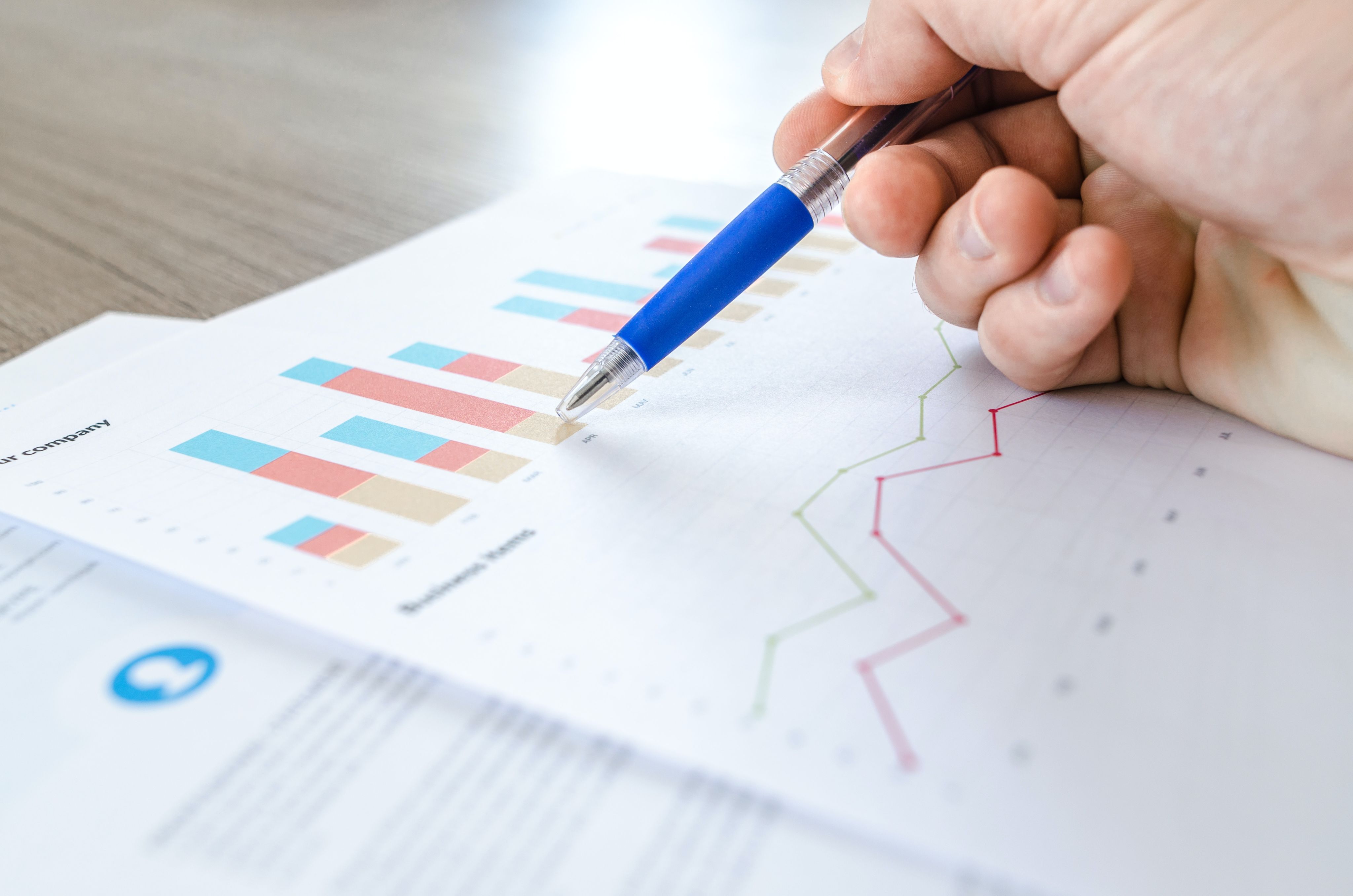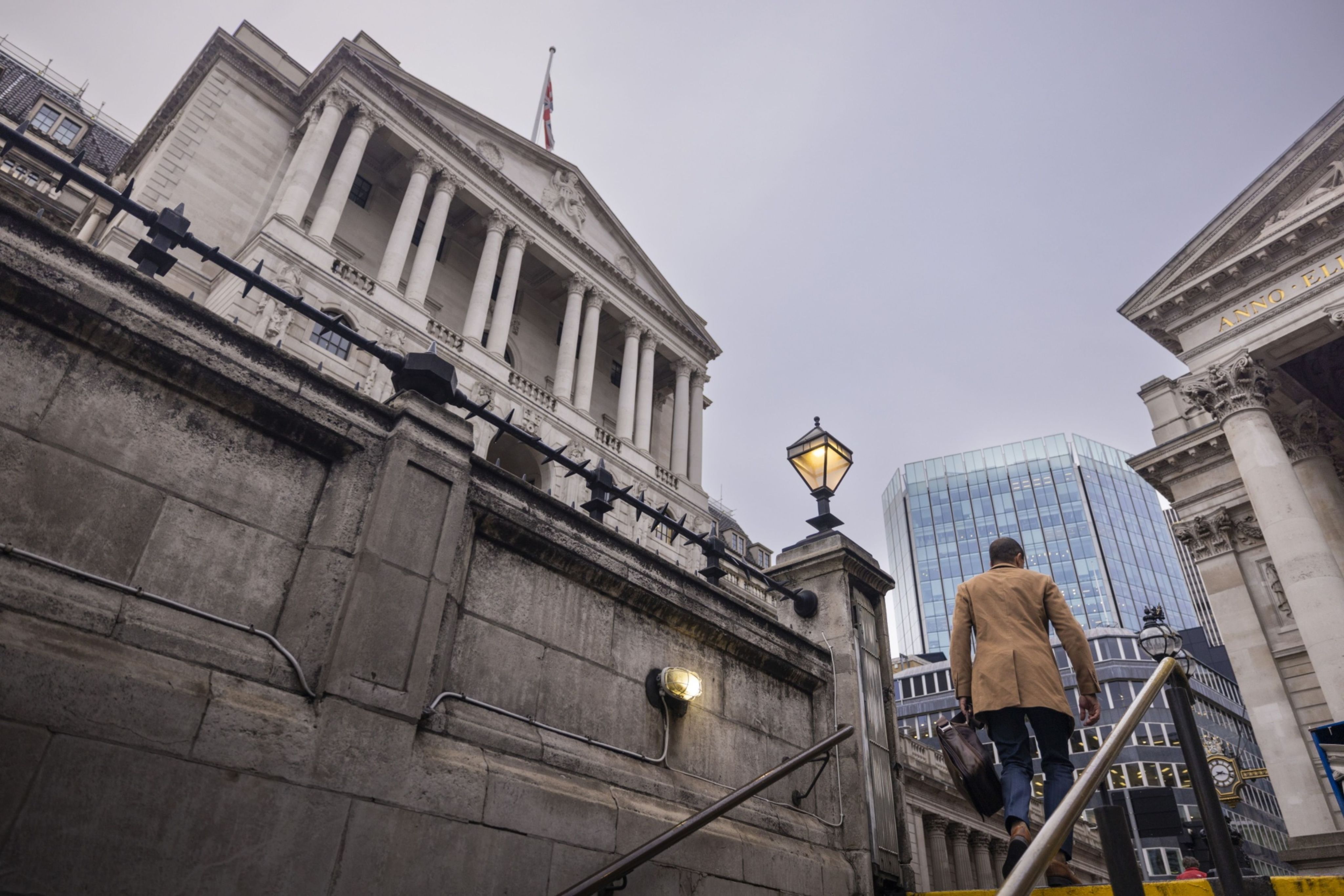Outlook for 2023
What does the future hold for investors over the next 12 months?


The past 12 months have been eventful, with several prime ministers and chancellors, and much turbulence in markets.
But before the disastrous "mini" Budget of September, pressures were already building in the economy, with inflation rising, along with interest rates and stress from global events such as Russia's incursion into Ukraine.
Where does this leave the outlook for 2023 on the markets?
There is still some uncertainty in the global economy for areas such as China and issues such as energy price rises, but some experts say we are likely to see more corporate activity in mergers and acquisitions and some capital expenditure.
Questions remain over whether inflation will slow down and whether geopolitical situations will improve. This report, worth an indicative 30 minutes' CPD, aims to outline some of the trends for the next 12 months.
Advisers content with risk levels going into 2023
An overwhelming majority of advisers are happy with the level of risk in the portfolios they manage for clients and do not intend to reduce it further, according to the latest FTAdviser Despatches poll, sponsored by Artemis.
The poll, conducted online during December, asked advisers whether they intend to reduce the risk levels in their portfolios now.
The result was 93 per cent of advisers declaring themselves happy with the current level of risk in their portfolios, and not intending to change it.
In the prior month, our poll showed advisers were increasingly keen on investing in bonds as yields have risen, and it may be that this ability to place more bonds into portfolios creates portfolios with risk profiles that are more typical of what advisers and their clients had been used to in the past.
Although markets have generally been lower in 2022, a possible restoration of the inverse correlation between bonds and equities in 2023 may actually make portfolio construction easier from a risk point of view in 2023.
david.thorpe@ft.com

While many professional investors proclaim their desire to ignore the macro and instead focus on individual stock or bond selection, 2022 was definitely a year in which ignoring the bigger picture was a futile pursuit, as concerns over geo-politics, monetary policy and prime ministers of short duration sent markets into a series of frenzies and portfolios lurching into the red.
But as clients digest their portfolio losses alongside their turkey, what are the major themes likely to drive market returns in 2023, and how can advisers and their clients position themselves?
There is a debate around inflation and interest rates, and the prospect of a 'pivot' from the US Federal Reserve and its impact on markets.
And investors must also grapple with a greater level of uncertainty around the outlook for the Chinese economy than has been the case for many years, with the key question perhaps being whether a deterioration in Chinese economic performance contributes to higher global inflation as companies move their production out of the country, or to a global economic slowdown.
Simon Edelsten, who runs the Mid Wynd investment trust and other mandates at Artemis, says one of the major drivers of equity markets in the coming year will be how the rate rises of 2022 fully impact asset prices in 2023.
He says: “The effect of raised rates will take time to show itself fully. So far, property markets (and funds) are being hit and there are signs of cracks in private equity over indebted structures. However, higher cost of funding will also slow investment backing immature technology and biotechnology ventures and could slow politicians launching (and promising) state-sponsored projects if these look extravagant against lower income tax receipts.”
The prospect of greater government spending and its impact on the wider economy is also on the mind of Steve Wreford, who runs the Lazard Thematic equity fund.
One of the major themes he says will drive returns in the coming year is energy. He says policymakers' previous focus was solely on transitioning economies away from fossil fuels, but that the events of 2022 will lead to a change in perspective, with “affordability and availability” being given greater prominence in how energy policy is formed.
In terms of what this means for markets, Wreford says he expects “gigantic” energy policy spending from governments around the world, and this will lead to a crowding in of finance from the private sector, as typically that is what happens.
"As governments spend on a sector, so the private sector follows. We think that could be an opportunity in 2023, as away from some of the larger stocks, valuations are quite attractive, and would be attractive even if the oil price fell dramatically. The more ESG-themed energy stocks probably trade at a bit of a premium so value is harder to find there.”
The second major theme Wreford says will impact markets in 2023 is capital expenditure. He says: “Companies are having their margins compressed as a result of inflation. And the logical and traditional way to combat that is through investing in other companies or in automation, replacing labour with capital. Governments are incentivising capital spending right now.
“The companies we speak with tell us they feel they have to invest in this way as if they don't they will be left behind, and they feel now is the time to do it. Of course not all companies will be able to do it, some just won’t have the money.
“For example, a lot of early-stage technology companies won’t be able to do that.”
Capital expenditure of a different kind is central to the investment thesis of Abrdn head of research Andrew Millington, as he says companies will try to improve their stretched margins through the simple expedient of buying their rivals.
He says: “Corporate activity is likely to provide support for share prices as both investors and companies start to see opportunities as a result of share-price declines.
“For example, mergers and acquisitions interest and investor activism remain particularly elevated in the UK. Both are the result of perceived value in the market.
“We’re seeing corporate buybacks continue in the developed markets. This activity is also increasing in parts of Asia, including China.
“Corporate cash conservatism – or hoarding cash reserves – hasn’t really started yet, except at those companies that are already under financial stress.”
Adrian Gosden, equity income fund manager at GAM, says that in the UK companies are choosing to buy back their own shares and pay higher dividends, rather than buy rival companies as the latter are "too expensive".
Bringing several of those themes together, Jeremiah Buckley, US equity investor at Janus Henderson, says a key theme around the investment case for energy companies in the coming years is that management teams in the energy sector are less likely to do merger and acquisition activity, whereas in the past, management teams in that sector were prone to buy rivals when commodity prices were high, and were subsequently stuck with the assets when prices fell.
Inflation
The third trend identified by Wreford, and one with which all advisers and clients have become familiar, is inflation.
Wreford says inflation in the US is likely to be much “stickier”, and persistent, than in the UK, as in the latter market the inflation is derived predominantly from energy prices, which are exogenous to the economy, and so will have effects that dissipate in the new year.
He says this will lead to lower but more volatile inflation in the coming year, and for markets, “we are likely to see the restoration of the traditional inverse correlation between bonds and equities, that's important for investors”.
Wreford says 2022 was one of only three years in the past century where equities and bonds fell at the same time, and the other two years (1931 and 1969) presaged periods of higher inflation and economic volatility.
Central banks responded to the higher inflation of 2022 by lifting interest rates, and it may be that the impacts of those policies are a major theme for 2023, according to Edelsten. He says: “Rates will stay raised – it was such a struggle getting them up here. Probably inflation won’t fall far enough, but markets and companies will welcome falling inflation levels.
“The crowding of money into the dollar and dollar havens like Wall Street should relax – better investment returns elsewhere, maybe even in the abandoned Japan and European markets.
“The effect of raised rates will take time to show itself fully. So far property markets (and funds) are being hit and there are signs of cracks in private equity over indebted structures.
"However, the higher cost of funding will also slow investment backing immature technology and biotechnology ventures and could slow politicians launching (and promising) state-sponsored projects if these look extravagant against lower income tax receipts.”
Fixed income focus
Lloyd Harris, fixed income manager at Premier Miton, says the story of 2023 in bond markets will be about riskier assets suffering.
He says this would be a reversal of the trends of the past decade, when central bank policies meant government bond yields fell, and so riskier bond assets performed well. But with the imminent reversal of those policies, we are, he says, heading for a period where government bond yields are higher, and so riskier bond assets are likely to perform less well.
Harris says high-yield bonds in particular will struggle to cope in this new environment, especially as the change of tack from central banks comes alongside a period of economic recession, when many investors are already contemplating reducing risk in their portfolio.
The reversal of quantitative easing is known as quantitative tightening. One of the ways in which central banks make this happen is by not buying any newly issued bonds, even as their existing stock of bonds reaches maturity.
That comes at a time when governments are issuing vast quantities of new bonds to fund fiscal initiatives such as energy subsidies, creating a potential imbalance between supply and demand that might usually be expected to lead to bond prices falling.
But Mike Riddell, fixed income investor at Allianz, says the impact of this supply and demand imbalance is most likely to be felt on the parts of the bond market with the longest date to maturity, as that is where central bank activity is concentrated.
Harris is another who says short duration bonds are the place to be right now as “there are so many risks in markets”.
Riddell is extremely cautious on the outlook for the global economy and as such has been increasing his exposure to government bonds as a consequence of this view.
He says: “The data is pointing towards potentially a very deep recession.”
Ben Edwards, fixed income fund manager at BlackRock, says: “You won’t find any bond fund managers right now who don’t see value in short duration corporate bonds, as it is an easy way to get a return for low risk. On the long-duration side, there is a debate there.
“Some would take the view that we could have a big recession next year and rates could be cut, but the reality is, people trying to predict that probably got it wrong this year.
“No one on January 1 2022 thought that where we are now would be the reality. I think there is value in yields falling, but it's always easy to get a return on short duration.
"My highest conviction position is that owning government bonds with some duration is an attractive place to be, I also think there is scope for bond prices to rise next year, while short duration yields are quite high, and it's a powerful set of circumstances when that happens.
“It is the reverse of what has happened so far this year. Our fund yields 7 per cent, and the market yields 5 per cent, so it's extremely likely that the bulk of returns will come from the yield on bonds.”
Marc Seidner, chief investment officer for non-traditional strategies at Pimco, says: “Investors who have already endured one of the most challenging years ever must now confront the question of how to invest when the US and other major economies may be headed toward a recession.
“While financial market volatility is likely to persist, we believe the case for bonds is stronger than it has been in years, bolstered by significantly higher starting yields and bonds’ strong track record during economic downturns.”
“Bond yields have risen sharply in 2022 as the US Federal Reserve and other central banks have hiked interest rates in an effort to tame inflation.
"Historically, starting yields have had a powerful correlation with bond returns, and today’s yields may offer investors both improved opportunities for income generation as well as greater downside cushion.
“The especially pronounced rise in shorter-dated bond yields means investors can find attractive coupons without taking on the greater interest rate risk inherent in longer-duration bonds.”

Pexels/ Mauricio Mascaro
Pexels/ Mauricio Mascaro

Anamul Rezwan
Anamul Rezwan

Pexels/Pixabay
Pexels/Pixabay
Outlook for global equities in 2023
2022 was the year we all saw inflation rise, especially following the invasion of Ukraine. Central banks raised interest rates to counter inflation, but they were starting from abnormally low rates left in place from the pandemic.
As 2022 comes to a close, the Federal Reserve seems close to the interest rates it intends to hold for some time, the eurozone farther away and the UK lagging. Japan has not raised rates at all, but now has the inflation it has been waiting for.
There are no clear indications that inflation in the US, UK or Europe has peaked. The increased cost of energy globally remains one issue, but higher prices for resources in many countries, along with wages, suggest inflation will continue to rise, certainly in the short term.
With global stockmarkets being impacted by so many issues, they are likely to remain volatile in the short term at least, but we believe this creates opportunities to buy good-quality companies, so we do not fear a scenario like this.
US interest rates are close to where they need to be. There will probably be two more rises of 50 basis points each. European interest rates will probably need to rise further for central banks to be comfortable that inflation will be contained. We believe it is better to raise rates early to avoid inflation even if this leads to a recession.
For stockmarkets to rise, they tend to need stable interest rates. This makes US markets more appealing at present than those in Europe. We are currently finding more investments offering long term value in the US than Europe, despite the US heading into recession in the shorter term. The UK’s chancellor, Jeremy Hunt, has said the UK is already in a recession.
Profit margins are falling as costs tend to rise more than prices. We tend to avoid sectors which struggle to pass on cost inflation, even if shares in those areas are more expensive. However, wage costs have affected even the large technology shares, so care needs to be taken in assessing margins for the year ahead, and we believe markets are underestimating how far margins will fall.
Some of the companies that have excellent records of passing-on cost inflation include scientific equipment makers such as Thermo Fisher and Mettler Toledo. Similarly, the US railroads that carry freight have shown the same ability, and have also been increasing efficiency in recent years through advanced network management.
2023 will see the impact of these changes:
- Will the US recession be mild or serious?
Our analysis is that the companies that coped well with the challenges of the last few decades will continue to cope well – companies that invest for the future and make things people need, from personal care products to healthcare to railroads. Most people have jobs and so the consumer is unlikely to be hard-hit by inflation; however labour costs, especially in the larger technology companies, could continue to rise, so squeezing margins.
- Against that background how do prospects look for Europe?
European consumers are facing a sharp rise in the cost of living from higher interest rates and energy bills. The ECB and Bank of England seem behind the curve in heading-off inflation and underestimate how far rates may have to rise. Over the next couple of years, we expect Europe to wean itself off dependence on Russian gas, but probably leaving energy costs higher than before – meaning a loss of competitiveness for manufacturers.
- Could Asia be the surprise for 2023?
Asian equities look relatively cheap (especially compared with American equities). China seems to be slowly recovering from Covid (and willing to try new vaccines) and Beijing is trying to restart the building sector. As the Yen has fallen sharply to levels last seen in the 1980s, Japanese exporters are enjoying a rise in competitiveness. The return of inflation may allow the ending of ultra-low Japanese interest rates and a recovery in the value of assets in dollar terms.
Outlook for 2023
The Artemis Global Select Fund enters 2023 with slightly less of the fund invested in the USA (56%*) and 9%* invested in Japan (roughly double the weighting of the MSCI AC World NR GBP index). Of the 18%* we invest in the UK and Europe, many of the companies, such as companies in our Luxury Goods theme, would welcome a reopening of China and Japan.
Equity markets as a whole have fallen alongside bonds through 2022. Now that interest rates are close to targeted levels, equity markets should become more stable. The shares of companies which grow their cashflows year on year (in real terms) should now return to providing real returns. We may not be entirely out of the woods on inflation, but there seem to be signs of light ahead.
Simon Edelsten is manager of the Artemis Global Select Fund.
* Source Artemis as at 30 November 2022.


